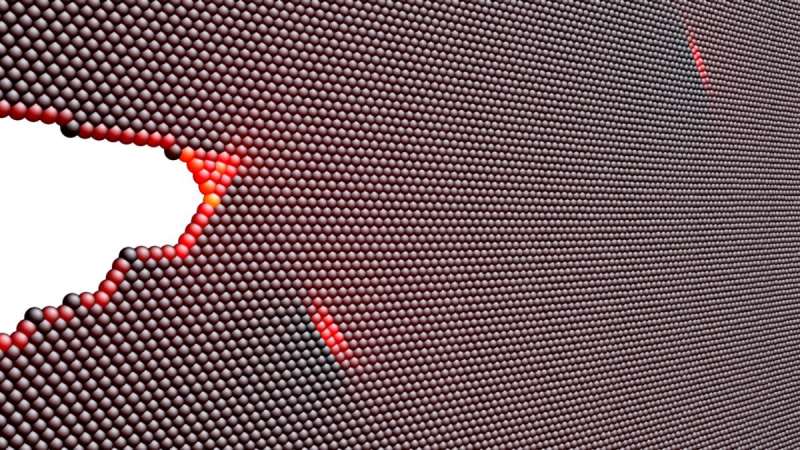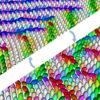The reason most structures fail isn’t due to shoddy material or violent impact. It’s something far simpler, smaller and even dull: prolonged, low-amplitude fatigue.
The mechanics behind—and inside—this slow fatigue are difficult to study. They’re literally hiding in the cracks.
A research group led by Derek Warner, professor of civil and environmental engineering in the College of Engineering, has made a breakthrough in understanding how some materials break. By using atomic modeling, the researchers identified the mechanism that causes fatigue cracks to grow: a defect—or dislocation—in the structure that begins near the crack tip, moves away from it, then returns to a slightly different location.
The finding could help engineers better anticipate a material’s behavior and design novel alloys that resist fatigue.
The group’s paper, “Atomic Mechanism of Near Threshold Fatigue Crack Growth in Vacuum,” published Feb. 10 in Nature Communications. The lead author is doctoral student Mingjie Zhao.
The project grew out of a different kind of fatigue, one that was more scientific than mechanical. For several years, Zhao and the paper’s co-author Wenjia Gu, Ph.D. ’21, were flummoxed by a problem. When they repeated previous atomistic simulations of crack growth, they found that if they let the simulations run long enough, beyond approximately 20 load cycles, the cracks stopped growing.
“We said, uh oh, what are we doing wrong? Things fail due to fatigue, and it’s because the cracks keep growing. We were stuck with a model that couldn’t actually model the physical thing we intended,” Warner said. “We looked through the literature of the other people who did atomistic simulations of crack growth, and all the literature was limited to 10s of cycles. No one was really doing simulations beyond that.”

This rendering shows the modeled atomic configuration at the tip of a fatigue crack with two dislocation defects. © Cornell University
One challenge with computer simulations is they use much lower mechanical loadings, and for shorter durations, because most researchers don’t have enough time or computational power to match that of real-world experiments.
So Warner’s group set out to create a series of simulations of a structural alloy—similar to steel or aluminum—in a vacuum. Each simulation inserted a different artificial mechanism that might provoke the cracks to move forward, as they would in the real world.
One simulation focused on irreversibility, i.e., defects were only allowed to move away from the crack. The second simulation added new sources of defects. A third simulation arranged multiple defects into a so-called “persistent slip band,” which is a form of localized strain, and introduced a crack near it.
Each time, the crack refused to budge.
A fourth simulation succeeded in propagating the crack after the team realized the defects needed to interact more closely with the crack tip, such that the atomic bonds would break.
“Fatigue failures are a very prevalent thing, but it’s never been clear actually what happens at the crack tip,” Warner said. “You need these defects, these dislocations, to come back in a slightly different location from where they left. That ends up moving material away from the crack tip. So it’s essentially moving forward.”
While the modeling explains the mechanical mechanism at the root of fatigue cracks, there is still an open question about what role the environment plays in their growth.
The Cornell Fracture Group is now interested in looking into how dislocations can be steered to different locations, and how loading can affect the process. Warner also sees an opportunity to take this new understanding of prolonged fatigue and apply it to the design of materials, which have historically focused on how much loading a material can take, or how far it can stretch, before it fails.
“I think because there’s no fundamental understanding of how fatigue happens, the design of new alloys and structural materials has been focused on strength and ductility, rather than fatigue,” Warner said. “So we really want to link this fundamental process to calculatable and tunable material properties to open new routes for creating fatigue-resistant materials.”
More information:
Mingjie Zhao et al, Atomic mechanism of near threshold fatigue crack growth in vacuum, Nature Communications (2022). DOI: 10.1038/s41467-022-28481-8
Provided by
Cornell University
Citation:
Researchers identify mechanism by which fatigue cracks grow (2022, February 16)



